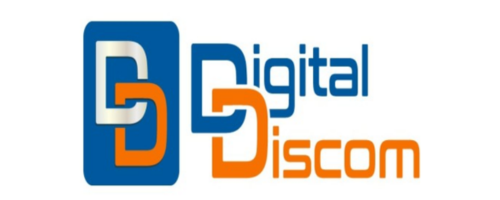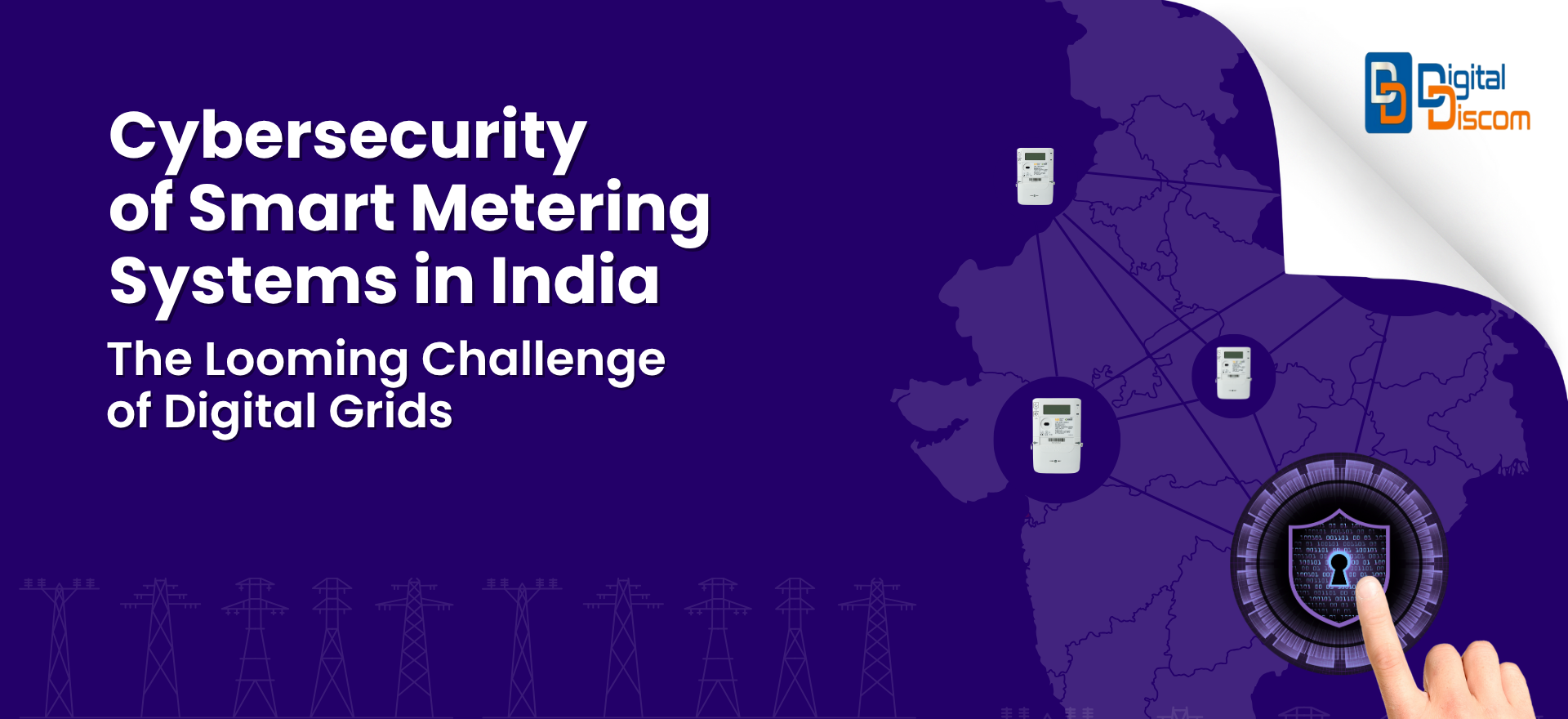Why Cybersecurity of Smart Metering Matters Now More Than Ever
India’s power sector is undergoing a rapid digital revolution with the large-scale deployment of Advanced Metering Infrastructure (AMI) and millions of smart meters under the Revamped Distribution Sector Scheme (RDSS). The integration of these devices promises operational efficiency, accurate billing, and real-time energy monitoring. However, as utilities embrace digital transformation, they are also stepping into a world of unprecedented cyber risks.
The convergence of information technology (IT) and operational technology (OT) has opened new attack vectors. Smart grids are no longer isolated; they operate over IP-based networks, communicate with cloud platforms, and integrate with billing and SCADA systems. This makes them vulnerable not only to cybercriminals but also to state-sponsored actors and terrorist groups that may seek to disrupt essential services. Before looking at the vulnerabilities in India’s smart metering systems, it is crucial to examine how cyberattacks have already impacted utilities worldwide.
Global Cyberattacks That Changed Energy Security
One of the earliest and most sophisticated attacks on critical infrastructure was Stuxnet in 2010. This malware infiltrated Iran’s nuclear facilities by exploiting zero-day vulnerabilities and reprogrammed Siemens PLCs to sabotage centrifuges, while operators saw normal readings. It demonstrated that cyberattacks could cause physical destruction, not just data loss.
In 2015 and 2016, Ukraine suffered power grid outages caused by cyberattacks. Hackers deployed malware such as BlackEnergy and Industroyer to gain remote access to SCADA systems and manipulated grid control protocols, cutting power to hundreds of thousands of people. These incidents showed how poor network segmentation and weak access controls can lead to massive disruptions.
The Colonial Pipeline ransomware attack in the United States in 2021 further illustrated the interconnectedness of IT and OT environments. Though operational systems were not directly compromised, the company shut down fuel distribution as a precaution after hackers infiltrated IT networks using a compromised VPN account. The result was a week-long fuel supply crisis that shook the U.S. East Coast.
Long-term campaigns like Dragonfly, which targeted energy companies across North America and Europe, exploited software supply chains and trojanized updates to gain persistent access to industrial systems. These attacks reinforced the importance of supply-chain security for utilities. Similarly, in Puerto Rico, hackers manipulated smart meter firmware to underreport energy usage, causing millions in revenue losses—proof that smart meters themselves can become tools for financial fraud.
Even India has had a wake-up call. The massive power outage in Mumbai in 2020 disrupted hospitals, financial markets, and metro rail networks. Although authorities did not officially confirm a cyberattack, forensic investigations indicated malware presence in load dispatch systems, potentially linked to foreign actors probing India’s power infrastructure.
The Role of AI in Future Cyber Threats
Artificial Intelligence is transforming cybersecurity—and cybercrime. While utilities use AI for predictive maintenance and demand forecasting, adversaries leverage it for malicious purposes. AI can enable automated reconnaissance of AMI networks, create adaptive malware that evades detection, and even mimic normal traffic to bypass intrusion detection systems. Generative AI can craft highly convincing phishing campaigns, while machine-learning-driven botnets could orchestrate distributed denial-of-service attacks targeting smart grid communication protocols.
As cyberattacks become faster and more intelligent, traditional defenses such as perimeter firewalls and signature-based detection tools are no longer sufficient. The future demands Zero-Trust architectures, continuous authentication, and AI-driven anomaly detection to identify threats in real time.
Why Smart Metering Systems Are Highly Vulnerable
India’s smart metering infrastructure consists of three major layers: the field layer (smart meters and data concentrators), the communication layer (RF Mesh, PLC, NB-IoT, or cellular), and the control layer (Head-End Systems and Meter Data Management Systems). Each layer introduces unique risks.
Smart meters, being IoT devices, have limited processing power and memory, which restricts the implementation of strong encryption. Many meters lack tamper-resistant designs, making them vulnerable to physical hacking and firmware manipulation. The communication layer often uses protocols such as DLMS/COSEM that, if deployed without proper encryption and authentication, can be intercepted, leading to man-in-the-middle attacks. At the control layer, Head-End Systems and MDMS—often hosted on IP networks or cloud environments—are high-value targets. A single breach can compromise millions of endpoints and even allow attackers to execute mass-disconnection commands.
The integration of AMI networks with enterprise IT systems like ERP and billing further increases the attack surface. If corporate credentials are compromised, attackers can pivot into OT systems, bypassing poorly configured segmentation controls. This is why security must be built into every layer, not bolted on as an afterthought.
Which Technology Is More Prone to Cyberattacks?
Among communication technologies, RF Mesh networks are generally more susceptible to interception because of their multi-hop architecture. Attackers can exploit weak encryption or replay packets to inject malicious commands. PLC-based networks, while harder to intercept physically, can be attacked through compromised data concentrators. NB-IoT and cellular technologies offer stronger security when combined with SIM-based authentication and TLS encryption, but poor implementation can still leave them vulnerable.
When comparing smart meters and central software systems, the latter pose a far greater systemic risk. While an individual meter can be hacked to manipulate consumption data, compromising the MDMS or Head-End System can affect millions of consumers simultaneously. These central platforms hold sensitive data and provide control functions, making them prime targets for ransomware and coordinated attacks.
Preventing Cyberattacks on AMI Systems
The cybersecurity of AMI must be rooted in robust IT-network principles. All communication between meters, data concentrators, and control systems should be secured using TLS 1.3 and AES-256 encryption. Mutual authentication through PKI and X.509 certificates should be mandatory for every device and application in the ecosystem. Firmware updates must be digitally signed and verified using secure boot mechanisms to prevent malware injection.
Network segmentation is crucial. AMI traffic should be isolated from corporate IT networks through VLANs, firewalls with deep packet inspection, and demilitarized zones. Implementing a Zero-Trust model—enforcing multi-factor authentication, role-based access control, and continuous device posture checks—will significantly reduce risks. Advanced intrusion detection systems powered by AI should be deployed to analyze behavioral patterns in AMI traffic, while all logs must be integrated into SIEM platforms for real-time correlation and automated incident response.
Finally, utilities must conduct regular vulnerability assessments and penetration tests simulating advanced persistent threats to validate their defense posture.
Why Indian DISCOMs Are Not Ready
Despite aggressive digitalization, Indian distribution companies (DISCOMs) are ill-prepared for this cyber risk landscape. The primary challenge lies in skills. Most personnel are trained in traditional electrical engineering but lack expertise in areas like TLS configuration, PKI lifecycle management, SIEM integration, and anomaly detection algorithms. Cybersecurity is often treated as a compliance formality rather than a strategic priority, leading to inadequate budgets and delayed implementation of security controls. Vendor dependency further aggravates the situation, as utilities rely on OEMs for security but lack internal capacity to audit compliance. Very few DISCOMs operate dedicated Cybersecurity Operations Centers (C-SOCs) for OT networks, leaving them blind to real-time threats.
The Importance of ISO 27001 Compliance
ISO 27001 provides a globally recognized framework for implementing an Information Security Management System (ISMS). For power DISCOMs, ISO 27001 compliance ensures structured risk management, continuous monitoring, and governance over information assets across IT and OT environments. Annual audits under ISO 27001 identify gaps, enforce process improvements, and ensure alignment with CEA guidelines, CERT-In advisories, and international standards such as IEC 62443. This is critical in maintaining consumer trust, protecting operational continuity, and meeting regulatory obligations.
Final Thoughts
Cybersecurity for smart metering systems is no longer optional—it is a core requirement for grid reliability and national security. The increasing sophistication of attacks, coupled with the integration of AI by adversaries, means utilities cannot afford complacency. Indian DISCOMs must adopt a Zero-Trust security posture, achieve ISO 27001 certification, and implement layered defenses across devices, communication networks, and centralized platforms. Without these measures, the cost of inaction could be catastrophic: widespread outages, financial losses, and erosion of public trust.





Having read this I believed it was very informative.
I appreciate you taking the time and effort
to put this article together. I once again find myself spending way too much time both reading and posting comments.
But so what, it was still worth it!